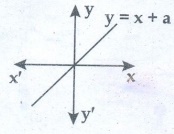Waves | Physics - Short Questions and Answer | 11th Physics : UNIT 11 : Waves
Chapter: 11th Physics : UNIT 11 : Waves
Short Questions and Answer
Waves (Physics)
Short Answer Questions
1. What is meant by waves?.
The
disturbance which carries energy and momentum from one point in space to
another point in space without the transfer of the medium is known as a wave.
2. Write down the types of waves.
a)
Mechanical wave - Waves which require a medium for propagation are
known as mechanical waves.
Examples:
sound waves, ripples formed on the surface of water, etc.
b)
Non mechanical wave - Waves which do not require any medium for propagation
are known as non- mechanical waves.
Example:
light
Further,
waves can be classified into two types a. Transverse waves b. Longitudinal
waves
3. What are transverse waves?. Give one example.
●
The constituents of the medium oscillate or vibrate about their mean positions
in a direction perpendicular to the direction of propagation of waves.
●
Example: light (electromagnetic waves)
4. What are longitudinal waves?. Give one example.
●
The constituent of the medium oscillate or vibrate about their mean positions
in a direction parallel to the direction of propagation of waves.
●
Example: Sound waves travelling in air.
5. Define wavelength.
●
For transverse waves, the distance between two neighbouring crests or troughs
is known as the wavelength.
●
For longitudinal waves, the distance between two neighbouring compressions or
rarefactions is known as the wavelength.
●
The SI unit of wavelength is meter.
6. Write down the relation between frequency, wavelength and velocity of a wave.
●
Dimension of wavelength is, [λ] = L;
Frequency
f = 1 / Time Period
which
implies that the dimension of frequency is, | f | = 1 / [T] = [T−1]
=>
[λ f] = [λ] [ f ] = [LT−1] = [Velocity]
Therefore
Velocity, λ f = v
●
Where v is known as the wave velocity or phase velocity. This is the velocity
with which the wave propagates.
●
Wave velocity is the distance travelled by a wave in one second.
7. What is meant by interference of waves?.
Interference
is a phenomenon in which two waves superimpose to form a resultant wave of
greater, lower or the same amplitude.
8. Explain the beat phenomenon.
●
When two or more waves superimpose each other with slightly different
frequencies, then a sound of periodically varying amplitude at a point is
observed.
●
This phenomenon is known as beats. The number of amplitude maxima per second is
called beat frequency. If we have two sources, then their difference in
frequency gives the beat frequency.
●
Number of beats per second n = | f 1 − f 2|
Per second.
9. Define intensity of sound and loudness of sound.
●
The intensity of sound is defined as "the sound power transmitted per unit
area taken normal to the propagation of the sound wave".
●
The loudness of sound is defined as "the degree of sensation of sound
produced in the ear or the perception of sound by the listener".
10. Explain Doppler Effect.
When
the source and the observer are in relative motion with respect to each other
and to the medium in which sound propagates, the frequency of the sound wave
observed is different from the frequency of the source. This phenomenon is
called Doppler Effect.
11. Explain red shift and blue shift in Doppler Effect.
●
The spectral lines of the star are found to shift towards red end of the
spectrum (called as red shift) then the star is receding away from the Earth.
●
The spectral lines of the star are found to shift towards the blue end of the
spectrum (called as blue shift) then the star is approaching Earth.
12. What is meant by end correction in resonance air column apparatus?
The
antinodes are not exactly formed at the open end, we have to include a correction,
called end correction.
L1
+ e = λ / 4 and L2 + e = 3λ /
4
13. Sketch the function y = x + a. Explain your sketch.

i)
A combination of constant and direct
ii)
A fixed amount is added at regular intervals
iii)
y = x + a, a suitable conclusion statement would be that,
1)
Y is linear with x
2)
Y varies linearly with x
3)
Y is a linear function of x, y is the intercept
14. Write down the factors affecting velocity of sound in gases.
Pressure, Temperature, Density, Humidity and
wind
15. What is meant by an echo?. Explain.
●
An echo is a repetition of sound produced by the reflection of sound waves from
a wall, mountain or other obstructing surfaces. The speed of sound in air at
20°C is 344 m s−1
●
If we shout at a wall which is at 344 m away, then the sound will take 1 second
to reach the wall.
●
After reflection, the sound will take one more second to reach us. Therefore,
we hear the echo after two seconds.
●
Scientists have estimated that we can hear two sounds properly if the time gap
or time interval between each sound is (1/10)th of a second
(persistence of hearing) i.e., 0.1 s. Then,
Velocity
= Distance travelled / Time taken ; = 2d / t
2d
= 344 × 0.1 = 34.1m; d = 17.2 m
●
The minimum distance from a sound reflecting wall to hear an echo at 20°C is
17.2 meter.
Related Topics